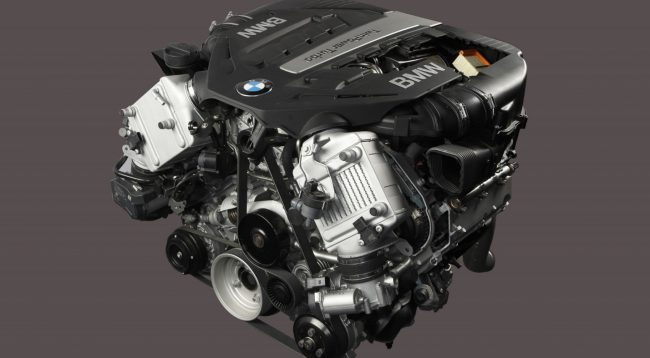
BMW X5 f15, g05 engines
Content
The BMW X5 is an iconic crossover that began production in the early 2000s and continues to be sold to this day. Glory to the car was brought by an aggressive appearance, assembly reliability and high cross-country ability - characteristics, the combination of which turned out to be a quality guarantor. Almost from the launch of the first generation to the latest model, the BMW X5 is considered the car of a successful person who has already been able to reach the top in this life.
What engines were installed on the BMW X5 in F15 and G05 bodies
The F15 and G05 bodies of the BMW X5 are completely different generations. The difference between the models lies not only in the change in the design solution and the vehicle equipment, but also in the technical equipment. For example, the latest 4th generation, presented in the back of the G05, significantly cut the line of powertrains, while the BMW X5 F15 provided a choice of more than 6 different engine versions.
The previous generation BMW X5 in the back of the F15 was equipped with the following powertrain models:
| Motor brand | Capacity of the power unit, l | Engine power, l s | Power unit type | Fuel type used |
|---|---|---|---|---|
| N20B20 | 2.0 | 245 | Turbocharged | Petrol |
| N57D30 | 3.0 | 218 | Turbocharged | Diesel |
| N57D30OL | 3.0 | 249 | Turbocharged | Diesel |
| N57D30TOP | 3.0 | 313 | Turbocharged | Diesel |
| N57D30S1 | 3.0 | 381 | Turbocharged | Diesel |
| N63B44 | 4.4 | 400 – 464 | Turbocharged | Petrol |
| S63B44 | 4.4 | 555 – 575 | Turbocharged | Petrol |
The brand and power of the motor directly depends on the configuration of the car. At the same time, the trend “the higher the cost of the car, the more powerful the engine” remains. BMW X5 models in the F1 body with N63B44 and S63B44 engines were installed only in limited vehicle configurations. The cost of X5 with an engine of 400-500 horsepower from the factory reached a practical double the price of ordinary "before tax" versions.


The latest generation of the BMW X5 in the back of the G05 is characterized by the installation of the following engines:
| Motor brand | Capacity of the power unit, l | Engine power, l s | Power unit type | Fuel type used |
|---|---|---|---|---|
| B58B30M0 | 3.0 | 286 – 400 | Turbocharged | Petrol |
| N57D30 | 3.0 | 218 | Turbocharged | Diesel |
| B57D30C | 3.0 | 326 – 400 | Dual turbo boost | Diesel |
| N63B44 | 4.4 | 400 – 464 | Turbocharged | Petrol |
Most of the diesel engines from the BMW X5 in the back of the F15 were discontinued due to unprofitability, leaving only the N57D30 model. Instead of the removed engines, an improved B57D30C appeared in production, where a double turbo was installed, which allows squeezing almost double the power of a single turbine progenitor out of the power unit.


Among gasoline engines, only the N63B44 remained with a power potential of 400 - 463 horsepower. The manufacturer also added a 3-liter B58B30M0 model with slightly less power than the N63B44, but significant fuel savings.
This is interesting! The main feature of the BMW X5 is the absence of a manual transmission. In both generations, all engines are provided with an automatic transmission, where the Tiptronic module is additionally introduced in more “fat” trim levels. It is the combination of engines with a large margin of power and a smooth transmission that provided the BMW X5 with such a long service life.
Which engine is the best car to buy
The latest generation of the BMW X5 in the back of the G05 can be safely taken with any unit. The manufacturing company took into account all the mistakes with the 3rd generation, as a result of which unsuccessful motors were removed from the assembly line. The only thing to note is the cost of maintenance, which is proportional to the power potential of the vehicle. Models with a capacity of 400-500 horses are very picky about low-quality fuel and untimely maintenance, and therefore they can quickly fail. Almost any BMW X5 can be "driven" to the point of needing a major overhaul for 50-100 km, subject to an aggressive style of operation.


Watch this video on YouTube
At the same time, before purchasing a BMW X5 in the secondary market, regardless of the configuration and year of manufacture, it is required to take into account the nature of the car's operation. In most cases, the X5 was acquired strictly for status and was often used for "demonstrative purposes". In practice, used BMW X5 with a live engine is quite difficult to find, despite the durability of the engines themselves.
It is highly not recommended to consider used engines with a capacity of 350 - 550 horsepower for purchase with a run of about "hundreds" of mileage. Especially if the engine is gasoline or has a dual turbo boost. In other cases, before buying, it is imperative to drive the car for diagnostics and conduct a complete inspection of the gearbox and the motor itself - if the previous owner did not exhaust the car, then the chances for the motor to live up to 600-700 km are very high.

